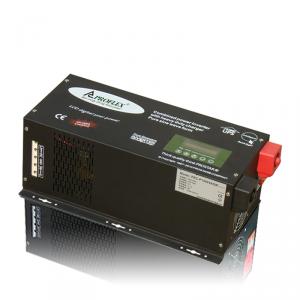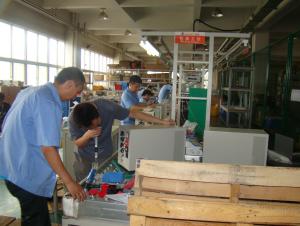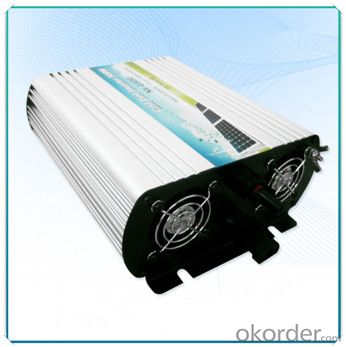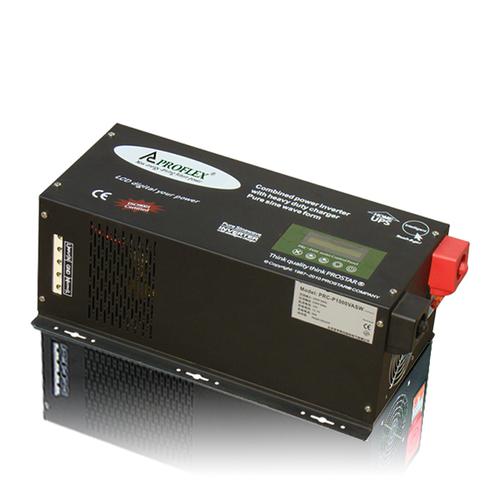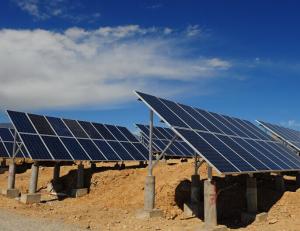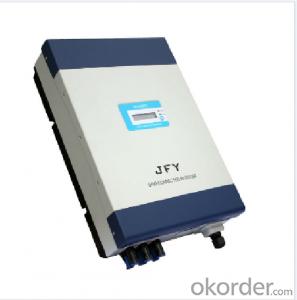500W Grid-Tied Solar Energy System Power Inverter
- Loading Port:
- Tianjin
- Payment Terms:
- TT OR LC
- Min Order Qty:
- 100 pc
- Supply Capability:
- 10000 pc/month
OKorder Service Pledge
OKorder Financial Service
You Might Also Like
Specification
Specifications
DC input:10.8~28VDC
AC output:120/230VAC
output power:500w
socket:Universal,USA,Australia,U.K,France,Germany etc
Type | Solar On-grid | Wind On-grid | ||||
Rated Power | 300W | 500W | 1000W | 300W | 500W | 1000W |
Maximum input current ( DC ) | 350W | 550W | 1200W | 400W | 600W | 1200W |
DC Maximum Input | 12.5A | 21A | 42A | 12.5A | 21A | 42A |
DC Maximum Voltage | 30V | 32V | ||||
DC Voltage Range | 15V~30V | 23V~32V | ||||
Input Connection | MC4 Connectors or DC Terminals | |||||
Maximum Output Power Factor | 99% | |||||
Anti-voltage Protection | Fuse | |||||
Output Short -circuit Protection | Current Limiting | |||||
AC Standard Voltage Range | 90V-140 VAC / 180~260VAC | |||||
AC Frequency Range | 55Hz~63Hz / 45Hz~53Hz | |||||
Output Current Total Harmonic Distortion | THDIAC < 5% | |||||
Phase Error | < 1% | |||||
Islanding Protection | VAC; f AC | |||||
Ambient Temperature Range | -25 °C ~ 60°C | |||||
Humidity | 0~99% ( Indoor Design ) | |||||
Waterproof | Indoor Design | |||||
Cooling Way | Cooling Fan | |||||
Electromagnetic Compatibility | EN50081.part1 EN50082.part1 | |||||
Power System Disturbance | EN61000-3-2 EN62109 | |||||
Network test | DIN VDE 1026 | |||||
Product Size | 22*17.5*8cm | |||||
QTY/Ctn | 10Pcs | |||||
Carton Size /Weight | 66.5*35.8*49cm , 22Kgs | |||||
(1) High converting efficiency higher than 97%
(2) Built-in MPPT tracker is equipped in the power inverter to optimize the power transformation
(3) Reversed current protection for preventing equipment damage
(4) Automatic battery temperature compensation for long-term reliability
(5) The solar charge controller is suitable for various types of batteries for the different charging modes
(6) Capable of connecting additional DC load for wider applications
(7) Three stage charge control system (bulk, absorption, and float mode) with temperature compensation
(8) LED indicators display charge status in real time
(9) Pulse Width Modulation (PWM) topology combined with a multi-stage charge control algorithm leads to superior charging and enhanced battery performance
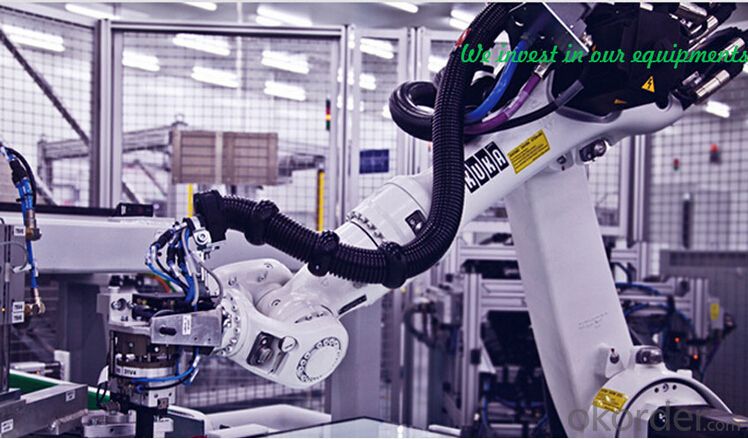
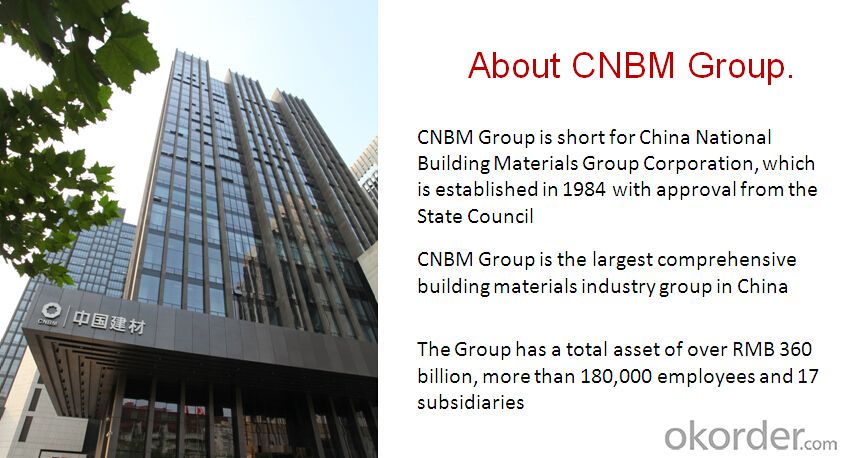

Q 1. what's the payment term?
A. We accept TT,30% deposit and 70% balance agaisnt copy of BL
Q 2. how's the delivery time ?
A. usually it will take about 25 days for production
Q 3. tell me the standard of package?
A. For the small capacity, it use carton, but for big capacity, we should use strong wooden case for protection.
Q 4. what kind of material of transformer?
A. we have two types, one 100% copper and the other is copper with aluminum.It depends on your requirment. In fact,those two have no difference if normal work well. Only except the longlife. Copper is better and also higer price.
- Q: Can solar energy systems be used for powering outdoor appliances?
- Yes, solar energy systems can be used to power outdoor appliances. Solar panels collect sunlight and convert it into electricity, which can then be used to power various appliances such as outdoor lights, fans, heaters, or even charging stations for electronic devices. This renewable energy source is ideal for outdoor use as it eliminates the need for traditional power sources and reduces carbon emissions.
- Q: Can solar energy systems be used in powering music studios or recording studios?
- Certainly, music studios or recording studios can definitely utilize solar energy systems for power. Solar power systems present a clean and renewable energy source that offers a reliable and economical solution for operating various electrical equipment, including the energy-intensive equipment typically found in music studios. To harness sunlight and convert it into electricity, solar panels can be installed on the studio building's roof or any other suitable area. This generated electricity can then effectively power a diverse range of equipment, such as amplifiers, mixers, microphones, computers, lighting fixtures, and air conditioning systems. The required size of the solar power system will depend on the studio's energy needs. By analyzing the studio's energy consumption patterns and demands, solar energy experts can design and install a tailor-made solar power system that perfectly suits the studio's specific requirements. One major advantage of utilizing solar energy in music studios is the potential for significant cost savings. Traditional electricity sources, especially in commercial settings, can be quite expensive. However, by generating their own electricity through solar power, studios can reduce their reliance on the grid and potentially diminish their electricity bills. Furthermore, solar energy is an environmentally friendly and sustainable option. Music studios often consume a substantial amount of electricity, and using solar power can help minimize their carbon footprint and contribute to a more environmentally conscious future. It is important to note that solar energy systems can also be combined with battery storage systems. This allows music studios to store excess energy produced during the day and utilize it during periods of low solar generation or at night. This further enhances the reliability and independence of the solar power system. In conclusion, solar energy systems can be effectively employed to power music studios or recording studios. They provide a clean, renewable, and cost-effective solution that can meet the energy demands of these facilities while simultaneously reducing their environmental impact.
- Q: Can solar energy systems be used for street lighting?
- Yes, solar energy systems can be used for street lighting. Solar street lights are becoming increasingly popular as they are more energy-efficient, cost-effective, and environmentally friendly compared to traditional street lights. They rely on solar panels to convert sunlight into electricity, which is then stored in batteries and used to power the street lights during the night. This renewable energy solution reduces reliance on the grid and helps to reduce carbon emissions.
- Q: Can solar energy systems be used for powering off-grid eco-tourism destinations?
- Yes, solar energy systems can be used for powering off-grid eco-tourism destinations. Solar panels can harness the power of the sun and convert it into electricity, making it an ideal renewable energy source for remote locations. By installing solar panels, off-grid eco-tourism destinations can reduce their reliance on fossil fuels, minimize carbon emissions, and promote sustainable practices. Additionally, solar energy systems can provide a reliable and consistent power supply, ensuring that these destinations can offer modern amenities and services to their visitors while preserving the natural environment.
- Q: Can solar energy systems be used in areas with limited sunlight?
- Yes, solar energy systems can still be used in areas with limited sunlight. While solar energy systems are most effective in regions with abundant sunlight, advancements in technology have made it possible to harness solar energy even in areas with less sunlight. Additionally, solar panels can still generate electricity on cloudy days or during periods of reduced sunlight. However, the efficiency and output of solar energy systems may be lower in areas with limited sunlight compared to sunnier regions.
- Q: What are the main features of solar photovoltaic systems
- Compared with the commonly used thermal power generation system, the advantages of photovoltaic power generation:No danger of depletion; safe and reliable, no noise, no pollution, absolutely clean (pollution-free); not subject to geographical distribution of the resources, can take advantage of the building roof; for example, areas without electricity, and complex terrain area; no fuel consumption and the erection of transmission line can be on-site power supply high quality energy;; users emotionally receptive; the construction period is short, get energy to spend a short time.
- Q: Can solar energy systems be used in conjunction with wind energy systems?
- Yes, solar energy systems can be used in conjunction with wind energy systems. This combination is often referred to as hybrid renewable energy systems. By integrating both solar and wind technologies, it becomes possible to capture energy from multiple sources, enhancing overall system efficiency and reliability. This hybrid approach allows for a more consistent and reliable energy supply, as solar energy tends to be more abundant during the day, while wind energy is typically more prevalent at night or during certain weather conditions.
- Q: Can solar energy systems be used in countries with low sunlight availability?
- Solar energy systems can still be employed in countries with limited sunlight. Although these systems depend on sunlight to produce electricity, technological advancements now enable the efficient capture and utilization of even small amounts of sunlight. Moreover, solar energy systems can be engineered to integrate other renewable energy sources like wind or hydroelectric power to compensate for the scarcity of sunlight. Furthermore, energy storage systems like batteries can store surplus energy during periods of low sunlight and release it as required. Consequently, solar energy systems remain a feasible and sustainable choice for electricity generation even in countries with insufficient sunlight.
- Q: How long does a solar energy system last?
- A solar energy system typically lasts for about 25 to 30 years, but can continue to generate electricity beyond that period with regular maintenance and occasional component replacements.
- Q: Are there any risks of electrical malfunction or failure with solar energy systems?
- Yes, there are some risks of electrical malfunction or failure with solar energy systems. These can include issues such as faulty wiring, damage to solar panels, or inverter failures. Additionally, extreme weather conditions like lightning strikes or power surges can also pose a risk. However, proper maintenance, regular inspections, and adherence to safety guidelines can help mitigate these risks and ensure the safe and efficient functioning of solar energy systems.
Send your message to us
500W Grid-Tied Solar Energy System Power Inverter
- Loading Port:
- Tianjin
- Payment Terms:
- TT OR LC
- Min Order Qty:
- 100 pc
- Supply Capability:
- 10000 pc/month
OKorder Service Pledge
OKorder Financial Service
Similar products
Hot products
Hot Searches
Related keywords

